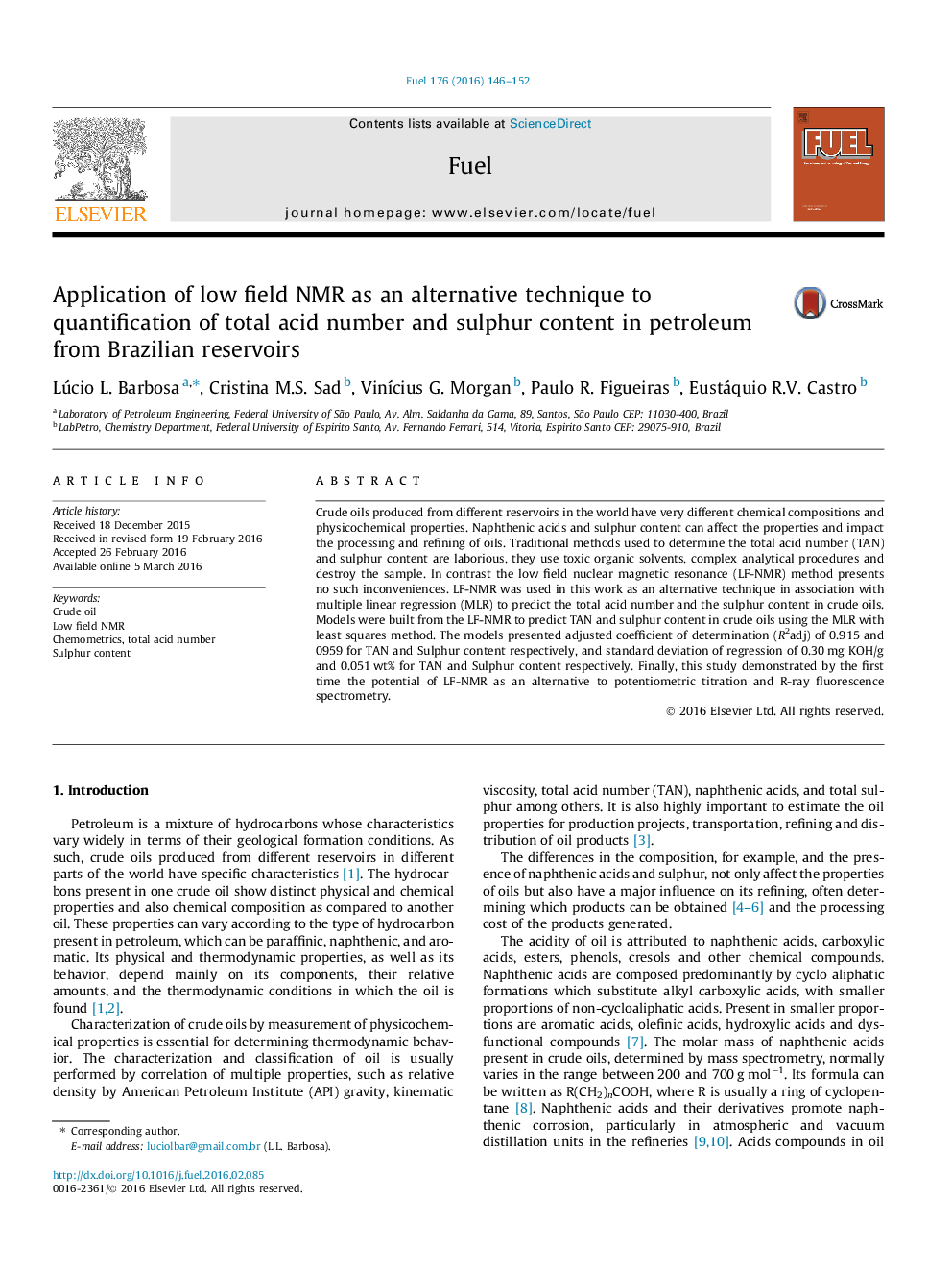| Article ID | Journal | Published Year | Pages | File Type |
|---|---|---|---|---|
| 205168 | Fuel | 2016 | 7 Pages |
Crude oils produced from different reservoirs in the world have very different chemical compositions and physicochemical properties. Naphthenic acids and sulphur content can affect the properties and impact the processing and refining of oils. Traditional methods used to determine the total acid number (TAN) and sulphur content are laborious, they use toxic organic solvents, complex analytical procedures and destroy the sample. In contrast the low field nuclear magnetic resonance (LF-NMR) method presents no such inconveniences. LF-NMR was used in this work as an alternative technique in association with multiple linear regression (MLR) to predict the total acid number and the sulphur content in crude oils. Models were built from the LF-NMR to predict TAN and sulphur content in crude oils using the MLR with least squares method. The models presented adjusted coefficient of determination (R2adj) of 0.915 and 0959 for TAN and Sulphur content respectively, and standard deviation of regression of 0.30 mg KOH/g and 0.051 wt% for TAN and Sulphur content respectively. Finally, this study demonstrated by the first time the potential of LF-NMR as an alternative to potentiometric titration and R-ray fluorescence spectrometry.
